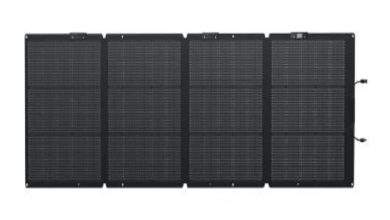
With the rise in the installation of solar panels in offices and residential homes, one question that is raised frequently is, how can they interconnect their panels so that they can obtain maximum utility from such panels? The debate on series vs parallel solar panels is also one of the most heard debates in this regard, as it regards two ways of connecting similar panels together.
Depending on which technique you employ, the more power you are going to generate and the way your system responds to shade, the gear you will need will also be different. When it comes to what you want as the difference between successful and ineffective systems, the difference in the two setups must be viewed. How then do each of them work, and which of them can best suit your case?
What Is a Series Connection?
Series connection: A series connection consists of a chain-like interconnection of the positive terminal of one panel with the negative terminal of the next. This decreases the overall voltage but at the same time maintains the same current (amperage). One case has four 12V arrays in series that will create a total of 48V.
The series connections are the best when you want your battery or inverter to have increased voltage. There is a drawback to this arrangement, though, should one of the panels not perform properly or be in shade, then the production of the entire system may drop. As in a chain, a weak link can diminish the output.
How a Parallel Connection Works
Parallel connection is the simplest way to work; it is just connecting all the plus of your panels together and all the minus together. This arrangement maintains the same voltage as the one panel but combines the current. Thus, 4 (five-amp) panels will give 20 amps. This is useful where one is desiring to use charge controllers or inverters that operate on lower voltages and can take a more substantial amperage.
Among the key benefits of parallel wiring, you will find that the panels will function with no need for another. The performance of other panels is not affected when one decides to dismantle or cover them with shade.
Key Differences in Power Output
- A series connection drops the voltage and maintains the same current (amperage); it is useful in long cable runs, and the loss of power is minimised.
- When two or more wires are parallel, voltage remains low, and the excess current is added; this may necessitate energy-thick cables to transmit increased amperage.
- Series configurations work best where the sunlight is uniform and of complete strength on all the panels.
- Parallel systems are more efficient when used where there is shading or light is inconsistent, since each panel operates separately.
- The optimal decision can be made on the basis of the existing design of your roof and the level of sun exposure of various parts of it during the day.
Safety and System Design
Safety is another consideration that is worth making between the two systems. The voltage is high in series systems and may be a source of an electrical shock when maintenance or any other activity is occurring. Parallel systems normally have lower voltage than; thus, it is safe to work on them. The increased current demand, however, requires the use of bigger cables and equipment in installation, which in turn tends to raise the cost of installation.
Nothing is worse than buying a setup compatible with your inverter and charge controller only to find out that it does not play well with your battery. When you are not sure, you can probably consult an expert who can assist you in making an informed choice. It will save you future expenses or even burn your house down in the end.
Which Setup Is More Efficient?
Your environment is always a factor in efficiency. A series of your panels can be more efficient overall (with minimally increased wiring) in cases where they all receive equal, unobstructed sunlight. However, when shading becomes a problem, such as with trees, chimneys, or dirt, a parallel installation can be more efficient. This is because when the systems are in parallel, poor work of one of the panels would not affect the other.
Parallel installations are more consistent in most residential settings, where the amount of sunshine varies at different times of the day. This is frequently untrue in large-scale commercial systems, which may use uniform lighting or the in-series connection, which is favourable due to the voltage advantage.
Final Verdict: Which One Should You Use?
However, an excellent set-up can always be defined by your particular needs down to the final end. If your panels become overloaded, receive maximum hours of direct sunlight, and you desire an easier or more affordable design, a series connection could be the solution.
If your coverage has partial shade or irregular sunlight, and you want to expand your system in the future, the parallel design will be more flexible and reliable. As you now congratulate yourself on learning the advantages and disadvantages of both series vs parallel solar panels, you will be better placed to design a system that fully serves your long-term energy objectives without compromise.




